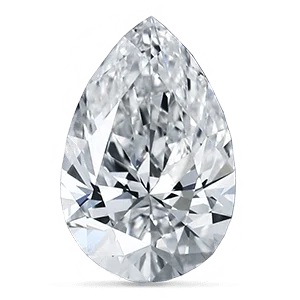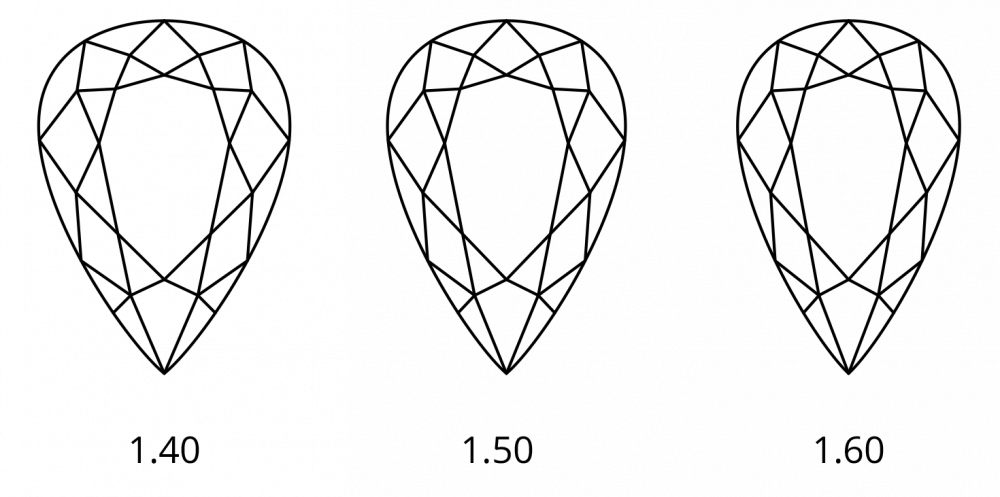
Pear Cut History
The first pear-shaped diamond was created in the 1400s by Flemish cutter Lodewyk van Berquem of Bruges, inventor of the diamond-polishing wheel, or scaif.
This invention enabled him to polish all the facets of the diamond to optimize light reflection within it. It was from this watershed moment onwards that diamonds began to be used in jewellery.
Van Berquem also pioneered the now commonplace symmetrical arrangement of facets on a stone, this in turn led him to fashion the pear-shaped "Pendeloque" or "Briolette" cut.
Features

The pear shape is a unique and hybrid diamond cut combining the brilliance and design style of both the Round Brilliant and the Marquise that results in a shape with a single point and rounded end.
The typical ratio is between 1.50 and 1.70 and the stone is usually comprised of 58 facets, although the number of pavilion facets may range from 4 to 8. Additionally, pear shapes are sometimes cut with a "French tip," which replaces the large bezel facet at the point with star and upper girdle facets. French tips are also used in the Heart and Marquise shapes. Pear-shaped diamonds may vary in appearance with some having what is referred to as “high shoulders”, making the stone appear more angular.
The pear shape can suffer from a so-called “bow-tie effect” when light passing through the diamond casts a shadow across the central facets of the stone. This shadow can be reduced by altering the depth of the pavilion, and adjusting the angles of the table and facets to better diffuse light in the central area. This effect also occurs in the Heart, Marquise and Oval shapes.
Proportions

While pear cut diamonds don’t have an official cut grade, the chart below serves as a general guide to use when considering the cut of a pear shape diamond.
Ratio is pear cut diamonds is down to personal preference and style. A narrow, elongated pear shape is achieved with a higher ratio, while a more rounded, wider pear is achieved with a lower ratio. The choice really is yours.
| Pear Cut | Excellent | Very Good | Good |
|---|---|---|---|
| Table % | 53%-63% | 52% or 64%-65% | 51% or 66%-68% |
| Depth % | 58% to 62% | 56%-57.9% to 62.1%-66% | 53%-55.9% or 66.1%-71% |
| Girdle | Very Thin - Slightly Thick | Very Thin - Slightly Thick | Very Thin - Thick |
| Culet | None | Very Small | Small |


 ENGLISH
ENGLISH 中文
中文